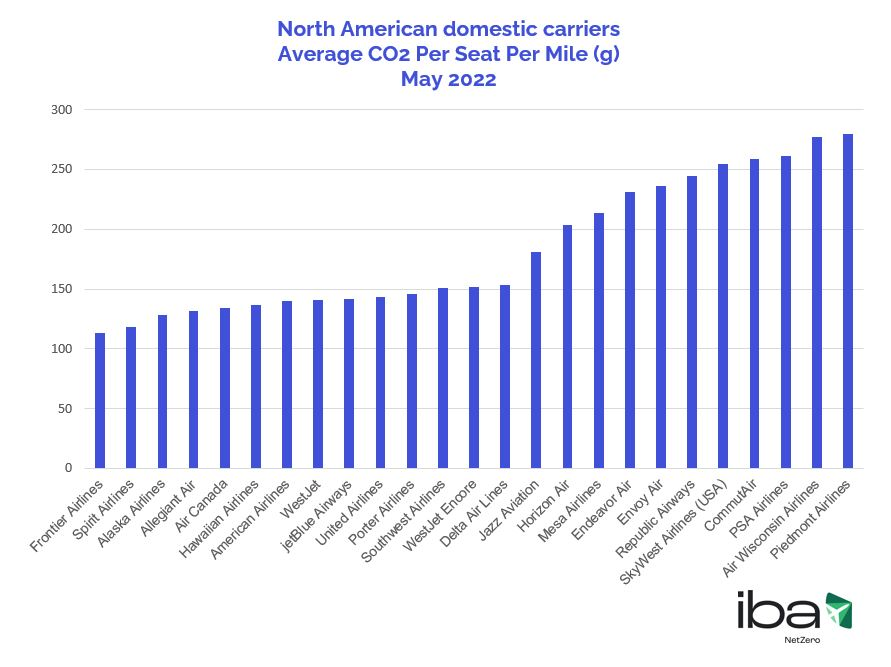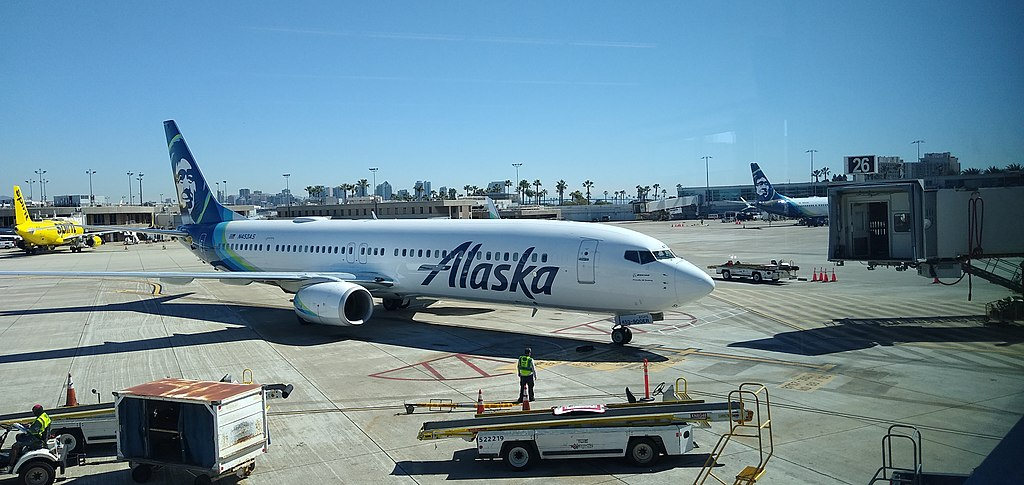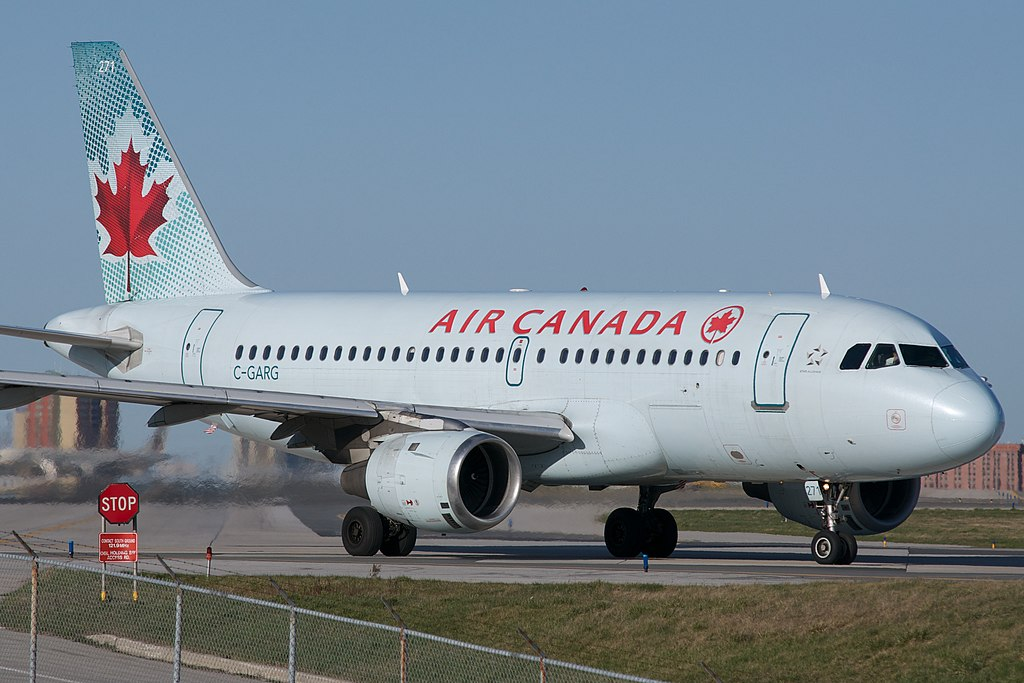05/07/2022
Carbon emissions data from IBA NetZero has revealed the most efficient airlines operating in the North American domestic market on a CO2 per-seat per-mile basis.
Our ranking includes legacy carriers, low-cost carriers, and feeder airlines, with a wide variety of aircraft types and seating configurations that affect their CO2 emissions.

Alaska Airlines averaged 128 grams of CO2 per-seat per-mile in May 2022. The airline benefits from operating a fleet biased towards high density aircraft, most notably those in the Boeing 737 NG family. As of mid-2022, 49% of the fleet are higher capacity 737-900ER aircraft.
The addition of 23 new generation 737 MAX 9 aircraft to the fleet has also improved overall efficiency. Our analysis indicates that if it were not for the blend of first, premium economy and economy seating, Alaska Airlines would have appeared higher in our ranking.

Alaska Airlines' use of the higher capacity Boeing 737-990ER drives the operator's overall CO2 efficiency per-seat per-mile.
Ultra-low-cost carriers are typically more efficient on a CO2 per-seat per-mile basis. Frontier Airlines ranks as the most efficient low-cost carrier (and most efficient carrier overall) thanks to operating a younger fleet of predominantly Airbus A320neo family aircraft, with an average aircraft age of just 4.2 years. IBA Insight reveals that 70% of the Frontier fleet are CFM LEAP-1A powered, high density Airbus A320neo aircraft with 186 seats. This high-density seating configuration has also contributed to average scope 1 CO2 emissions of 114 grams of CO2 per-seat per-mile. Spirit airlines closely follows Frontier in the ranking, with a proposed merger between the two carriers still a possibility in the near future.
Air Canada ranks as the most efficient legacy carrier in our ranking, averaging 134 grams of CO2 per-seat per-mile in May 2022.
Air Canada's sustainability plans are broadly in line with the industry's net-zero goal for 2050. Most notably, the carrier aims to reduce greenhouse gasses from air operations by 20% (compared to 2019) and invest CA$50 million in sustainable aviation fuel and carbon reduction and removals by 2030.
Fleet data from IBA Insight reveals that Air Canada's active Airbus A319 fleet has reduced by 75% since June 2019. The reduction in North American domestic services operated by this older type has contributed to their position in our ranking.
Our recent analysis also identified the Canadian flag carrier's short haul operations as showing the most improvement in unit CO2 emissions, with a 17% reduction observed since 2019.

Air Canada has reduced the active A319 fleet by 17% since June 2019. Credit: bryYYZ, Wikimedia Commons.
Operators using a higher proportion of turboprop aircraft perform better in our ranking than those focussed on jets. Operators such as Jazz, Horizon and Mesa operate turboprops such as the DHC8-400Q on small, mission specific sectors, where narrowbodies would not prove economical. In comparison, shorter sectors flown using ageing CRJ-900, 700 200 jets at Endeavour Air result in a poorer performance. Such carriers are often using multi-class seating configurations, further impacting CO2 efficiency per-seat per-mile.
IBA NetZero is the most advanced finance-focused carbon modelling tool currently available; we're leading the way. It's powered by IBA's proprietary fuel-burn intelligence which, when integrated with the Flights and Fleets module, can illustrate carbon emissions by any combination of: time period, airline, lessor, aircraft MSN and model, fleet, future portfolios, OEM, country, airport and route pair.
相关内容